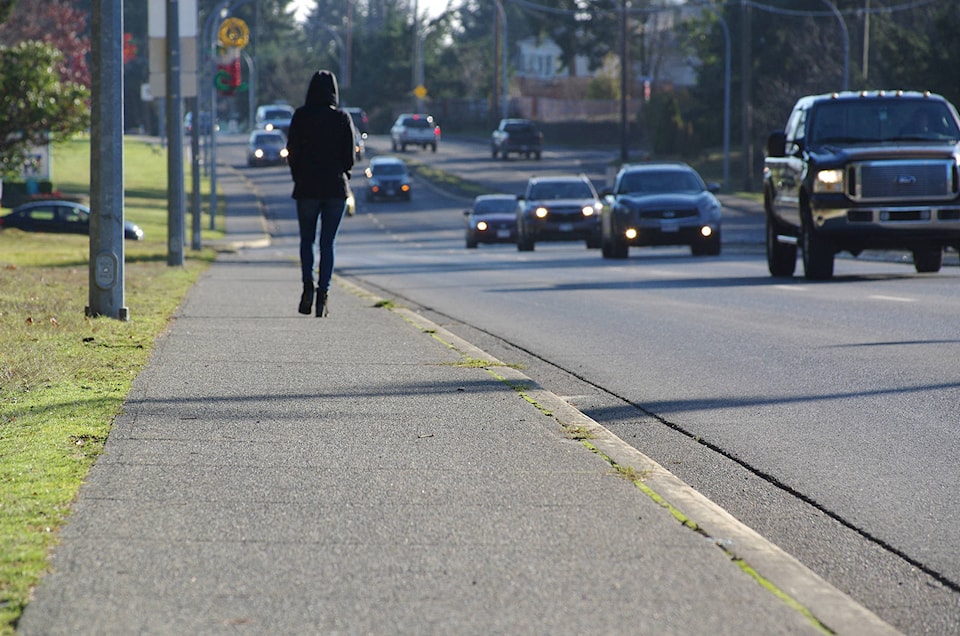There’s never going to be consensus about how the city should spend citizens’ hard-earned tax dollars. But maybe sidewalks aren’t a bad place to start.
Of all the questions that might have been asked at last week’s e-town hall meeting, the one topic to be asked about twice was sidewalks: How do we go about getting more of them?
The e-town hall Dec. 4 at the Vancouver Island Conference Centre was organized in order to give citizens a chance to ask about the 2018-22 draft financial plan. Out of all the line items listed in that document, maybe it shouldn’t come as a surprise that sidewalks matter. The city has a lot of programs and services that residents don’t see, or don’t think about, in our day-to-day lives. But sidewalks are right there – or not – in the neighbourhoods in which we live.
“The frustration that people may feel as a result of not getting stuff where they think it should be, when they think it should be, is probably shared by the majority of the people here,” said Coun. Bill Bestwick.
He said, for example, that he wants to see sidewalk expansion along Dufferin Crescent, the Greenrock neighbourhood and on Lost Lake Road, but suggested that each councillor might have different wishes.
Coun. Jim Kipp said sidewalk improvements would typically come from people lobbying for their neighbourhoods and consideration of safety reports.
“I think the roads are decent in our topography, but the drivers are really, really bad, arrogant, speeding, texting, so it’s a safety issue,” Kipp said.
He favours a “paradigm shift” in thinking about sidewalks and safety and would like to see sidewalk expansion extend outward from schools.
“A few old people get run over in the neighbourhood, it doesn’t bother me as much as a couple of kids getting run over, so if we can get [sidewalks] where those kids are, where the buses are and safe areas, that would be more important to me,” said Kipp.
City chief administrative officer Tracy Samra said mayor and council can choose to move certain projects forward, but would weigh those against ones recommended by public works and engineering, which has requirements around maintaining existing assets and infrastructure.
Coun. Diane Brennan said she’d prefer that politicians’ influence on the file be limited and said councillors need to rely on staff to determine where the sidewalks need to go and when the work needs to be done.
Coun. Ian Thorpe added that there are often ways to tie sidewalk projects to other road work and find cost efficiencies.
“We have to rely on our staff for a bigger-picture overview of city priorities and safety issues,” he said.
So building sidewalks isn’t a straightforward process, it turns out. It’s something the city will always need to do, especially as it looks to improve walkability in its mobility hubs like the hospital area and around malls. The city’s 2014 transportation master plan found that 8.5 per cent of residents’ trips were by foot and set a goal to nudge that up to 12 per cent by 2041. Various strategies were put forward, such as widening sidewalks, providing amenities like garbage cans and benches, and creating buffers from traffic. A stated policy is to focus sidewalk improvements on areas with greatest demand and potential usage.
In an endless list of wants and needs in a city, sidewalks seem to be high on the list. After all, if Nanaimo is a nice place to go for a walk, then sidewalks are a pretty useful pathway to get to where we want to go.
editor@nanaimobulletin.com
Like us on Facebook and follow us on Twitter
